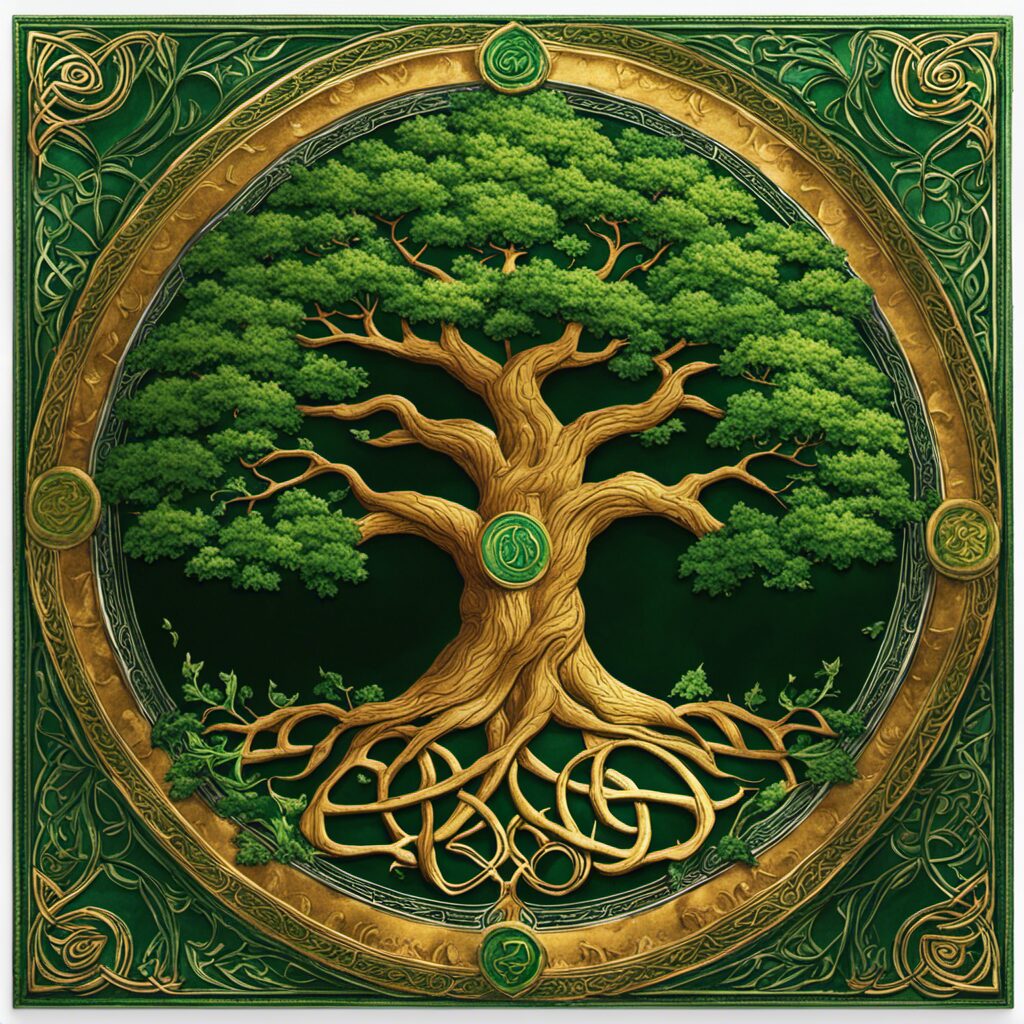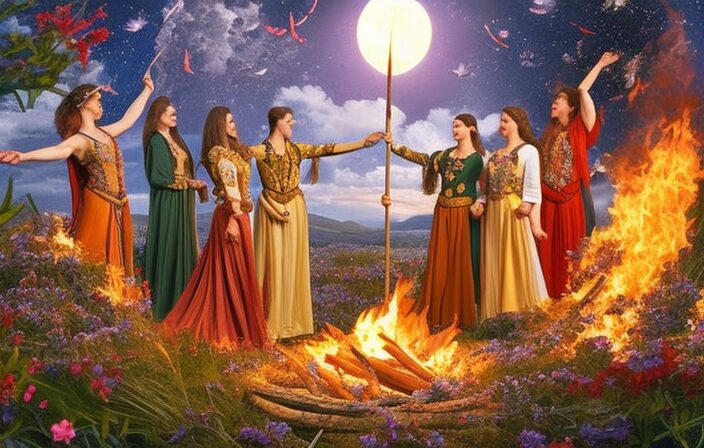Throughout history, various cultures have employed calendrical systems not only to organize time but also as a means of divination and prophecy. One such system is the Celtic calendar, which has long been associated with predictions about future events.
This article examines the evidence surrounding documented Celtic calendar prophecies, delving into their historical background and analyzing key dates and events. By comparing these predictions with other ancient prophecy systems, we can gain insight into the accuracy and reliability of the Celtic calendar in predicting the future.
The modern relevance of this topic will also be explored, along with ongoing debates surrounding the validity of these prophecies.
Key Takeaways
- The Celtic calendar originated from the ancient Druidic tradition in Ireland and Britain and played a central role in religious rituals, agricultural practices, and societal organization.
- The calendar was based on lunar and solar cycles and organized time into different periods that influenced everyday activities.
- Key dates and events in the Celtic calendar were believed to hold predictive powers and were associated with major transformations or upheavals.
- Interpretation of Celtic calendar predictions involves examining celestial alignments, mythological narratives, and cultural context, but concerns about reliability and bias exist due to the lack of specific details and retrospective nature of some predictions.
Historical Background of the Celtic Calendar
The historical background of the Celtic calendar encompasses its origins, development, and cultural significance within Celtic society. The Celtic calendar is believed to have originated from the ancient Druidic tradition in Ireland and Britain. It was a lunisolar calendar, meaning it followed both lunar and solar cycles to determine dates and events. The specific historical origins of the Celtic calendar are not well-documented, as much of the knowledge about it comes from later medieval manuscripts.
The cultural significance of the Celtic calendar cannot be understated. For the Celts, time was seen as cyclical rather than linear, with each year composed of repeating patterns and seasons tied to nature’s rhythms. The calendar played a central role in religious rituals, agricultural practices, and societal organization. It helped determine important dates for ceremonies such as Beltane and Samhain, marking important points in the agricultural cycle.
Moreover, the Celtic calendar had a profound impact on social life by organizing time into different periods that influenced everyday activities such as farming or warfare. Its influence can also be seen in art forms like stone carvings or metalwork which often depicted celestial bodies associated with specific months or festivals.
Key Dates and Events in Celtic Calendar Prophecies
Key dates and events in the context of the Celtic calendar prophecies are essential elements in understanding their potential significance. The Celtic calendar, rooted in ancient Celtic culture, was deeply tied to celestial alignments and natural phenomena. It is believed that these celestial events played a significant role in shaping the predictions made by the Celts.
To paint a picture for the audience, here are four key aspects related to the significance of celestial alignments in Celtic calendar prophecies:
-
Solstices and Equinoxes: These astronomical events marked important turning points in the year, symbolizing changes in seasons and agricultural cycles. They were likely seen as powerful times for divination and prophecy.
-
Lunar Phases: The cycles of the moon were closely observed by the Celts, who attributed mystical qualities to each phase. Specific lunar phases were believed to hold predictive powers and influence future events.
-
Planetary Alignments: The alignment of planets was considered highly significant in Celtic mythology. It was believed that such cosmic occurrences had direct implications on human affairs and could be interpreted as omens or signs.
-
Celestial Movements: Certain celestial phenomena such as meteor showers or comets were viewed as rare occurrences with profound meaning. Their appearances were often associated with major transformations or upheavals.
The interpretation of these celestial alignments and events relied heavily on mythology and folklore. Stories passed down through generations provided frameworks for understanding these predictions within a cultural context. Mythological figures, symbolic motifs, and archetypal narratives served as tools for interpreting the messages embedded within the Celtic calendar prophecies.
Interpretation and Analysis of Celtic Calendar Predictions
Interpretation and analysis of the predictions made within the Celtic calendar system involves a careful examination of celestial alignments, mythological narratives, and cultural context. However, there have been interpretation controversies surrounding the accuracy of these predictions.
One major concern regarding the accuracy of Celtic calendar prophecies is the lack of specific details. The predictions often provide vague descriptions that can be interpreted in multiple ways. This ambiguity leaves room for different interpretations and raises questions about their reliability as accurate foretellings of future events.
Additionally, critics argue that many so-called ‘predictions’ made by the Celtic calendar system are retrospective in nature. These interpretations are based on historical events that have already occurred, rather than providing genuine foresight into future events. This retrospective approach diminishes the credibility of these prophecies as reliable sources for predicting future occurrences.
Furthermore, some scholars suggest that certain predictions attributed to the Celtic calendar system may have been influenced by external factors such as political agendas or personal beliefs. This raises concerns about bias and manipulation in interpreting these prophecies.
Comparisons With Other Ancient Prophecy Systems
Comparisons between the Celtic calendar system and other ancient prophecy systems provide insights into similarities and differences in their methods, sources of information, and interpretations.
When comparing the Celtic calendar with the Mayan prophecies, it is evident that both systems relied on astronomical observations to predict future events. The Mayans used their advanced knowledge of celestial movements to develop a complex calendrical system that also incorporated religious beliefs. Similarly, the Celts had a deep understanding of astronomy and aligned their calendar with natural phenomena such as solstices and equinoxes.
In terms of sources of information, the Greeks’ oracle predictions bear some resemblance to the Celtic calendar prophecies. Both systems involved seeking guidance from spiritual entities or deities for insight into future events. The Greeks consulted oracles such as the famous Oracle of Delphi, while Celts sought wisdom from druids who were believed to have a connection with supernatural forces.
Interpretations also played a crucial role in both systems. Both the Celts and Greeks interpreted signs and symbols to understand what lay ahead. However, while Greek interpretations often centered around divine intervention or punishment by gods, Celtic interpretations focused more on nature’s omens and interactions with spirits.
Overall, comparisons between these ancient prophecy systems highlight commonalities in their reliance on astronomical observations, seeking divine guidance, and interpreting signs and symbols. However, differences in sources of information and interpretation methods reflect unique cultural contexts within which these systems developed.
Modern Relevance and Debates Surrounding the Celtic Calendar
Significant scholarly debates have emerged regarding the modern relevance of the Celtic calendar and its potential role in understanding ancient cultural practices. The Celtic calendar, which was used by the ancient Celts to mark time and organize their agricultural and religious activities, has been subject to various modern interpretations.
Proponents argue that studying the Celtic calendar can provide insights into the worldview, beliefs, and rituals of ancient Celtic societies. They claim that it can shed light on their agricultural practices, seasonal celebrations, and religious observances.
However, critics question the accuracy and reliability of these modern interpretations. They argue that our understanding of the Celtic calendar is limited due to a lack of primary sources and conflicting information from secondary sources. Additionally, they highlight that many aspects of ancient Celtic culture remain mysterious or poorly understood.
Despite these debates, the cultural significance of the Celtic calendar cannot be denied. It serves as an important aspect of Celtic heritage and identity for many people today. Modern celebrations such as Beltane and Samhain are often based on festivals that were originally tied to specific dates in the Celtic calendar. Therefore, even if its exact functionality remains uncertain, its influence on contemporary cultural practices is undeniable.
Conclusion
In conclusion, the Celtic calendar has long been regarded as a fascinating system of prophecy. Through its intricate combination of astronomical observations and ancient folklore, it has purportedly predicted key events throughout history.
However, upon closer examination, one must question the validity of these predictions. While there may be instances where the Celtic calendar aligns with significant occurrences, it is important to approach such claims with skepticism and consider alternative explanations.
The debate surrounding the accuracy and relevance of the Celtic calendar continues to ignite scholarly discourse, reminding us that even ancient systems can captivate our imagination while leaving room for doubt.



